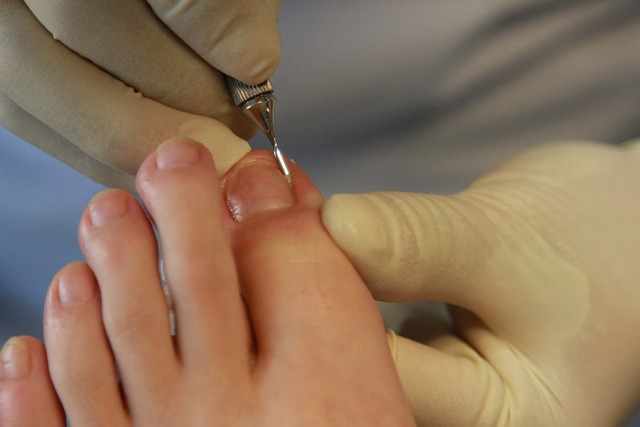All You Need To Know About Diabetic Foot Care
Diabetes is a journey filled with many twists and turns, and your feet are the unsung heroes of that journey. They carry you through life’s challenges, and when diabetes enters the picture, the importance of proper foot care cannot be overstated. Having a trusted podiatrist becomes your secret weapon against potential problems turning into crises.
"Regular foot care is crucial for people with diabetes, as it can prevent up to 85% of diabetic foot amputations. Early intervention and proper care by a podiatrist is key to significantly reduce the risk of complications. "
At Sports Medicine Clinic, we understand that the path to diabetic foot health can be complex, but we’re here to guide you every step of the way. Our dedicated team of podiatrists is committed to providing personalised care, focusing on prevention and early intervention, so you can continue your journey with confidence.
What roles do Podiatrists play for people with diabetes
Podiatrists play the most critical role in the care of people with diabetes.
The right care prevents complications from escalating. Podiatrists are the guardians of your feet, ensuring that potential problems are addressed promptly, ultimately safeguarding your mobility, comfort, and well-being.
With their expertise, podiatrists keep you on a path of diabetic foot health, reducing the risk of serious issues and amputations. Their diligence in monitoring, early intervention, and personalised guidance is the key to preserving the quality of your life on this journey with diabetes.
Podiatrists are healthcare professionals who specialize in the diagnosis and treatment of conditions affecting the feet and lower limbs. As a podiatrist, we can provide the following services:

Diabetic foot care education
Podiatrists can provide education to people with diabetes on how to care for their feet, including how to perform daily foot inspections and manage foot problems.

Foot examinations
Podiatrists will regularly examine the feet of people with diabetes to look for signs of damage, such as cuts, blisters, or infections. This can help identify problems early and prevent more serious complications. They perform assessments on blood flow and nerve sensations to determine the risk status of each individual. The Podiatrist works in collaboration with the referring General Practitioner so a comprehensive care plan is achieved for each individual.

Treatment of foot problems
Podiatrists can provide treatment for a wide range of foot problems that are common in people with diabetes, such as fungal infections, calluses, and corns. They can also treat more serious issues like foot ulcers, which can be especially dangerous for people with diabetes.

Footwear advice
Podiatrists can provide advice on appropriate footwear for people with diabetes. This can include recommendations on shoe types, fitting, and materials to help prevent foot problems.
Overall, podiatrists play a crucial role in the care of people with diabetes, helping to prevent foot complications and providing treatment when necessary. It is important for people with diabetes to have regular foot exams and work closely with their Podiatrist to manage their condition.
Should everyone with diabetes see a podiatrist?
All patients with diabetes should see a podiatrist. On your initial appointment with a podiatrist, a thorough assessment will be performed which will result in an individual risk status.
Generally speaking, a person with diabetes who has good blood flow and good nerve sensation in their feet may be categorized as low risk, which will mean annual foot examinations and treatment. However again generally speaking, a person with diabetes who has reduced blood flow and nerve sensation may be categorized as moderate or high risk, which may require more regular appointments. These regular appointments may consist of the podiatrist checking your general foot health and providing treatment such as cutting toenails and callus to prevent build up and more severe complications if left untreated. In more severe cases, ulcers could be what’s being treated.
When should a person with diabetes get referred to a Podiatrist?
A person with diabetes should get referred to a Podiatrist immediately. A Podiatrist is fully qualified to perform a thorough examination of the diabetic foot, determine their risk status in regards to infection and establish an appropriate treatment plan in collaboration with their General Practitioner.
What to expect from your first appointment
Signs you should see a podiatrist immediately for diabetic foot issues?
- Open wounds
- Infection: signs of infection include redness, swelling, warmth and increased pain.
- Ingrown toenails
- Changes in skin colour or temperature
- Numbness or Tingling
- Foot Deformities
- Pain: Persistant or severe pain should not be ignored
- Swelling: unexplained swelling in feet or ankles
- Difficulty walking
- Fungal infections
Manage foot care at home between podiatry visits?
- Daily foot inspection
- Keep feet clean and dry
- Moisturize
- Trim nails carefully
- Proper footwear: Comfortable, will fitted shoes. Avoid walking barefoot
- Protect your feet: shoes and socks. sunscreen on feet if wearing open shoes
- Elevate your feet
- Control blood sugar levels
- Regular exercise
FAQ's for Diabetic Foot Care
Once you have been diagnosed with diabetes, you should consult with a podiatrist. Only then can a podiatrist assess how the diabetes has affected your feet and determine how regularily you should get treatment. If your diabetes is well managed and no damage has been caused to your feet, annual Podiatric treatment and self care at home may be sufficient. If your diabetes is not well managed and damage has already been caused to your feet, regular 6-8 weekly appointments is advised.
No. Type 1 and Type 2 diabetes have the same risk factors associated with them. If you suffer from either Type 1 or Type 2 diabetes, you should consult with a podiatrist.
If you have diabetes, you’re eligable to a medicare rebate. Your general practitioner can give you a referral (called an Enhanced Primary Care program ie EPC) which entitles you to a medicare rebate for podiatry treatments.
We support NDIS self-managed clients. Click here to learn more here.
After Hours Podiatry Home Visits
Can’t visit us in the clinic? No problem! We will come to you! Find out how to book an after hours Podiatry home visit with one of our friendly podiatrists.

Dr. Yasmin Karam
Dr. Yasmin Karam graduated with a Bachelor of Health Science/Masters in Podiatric Medicine. Dr. Yasmin has had experience working in both private and public sectors, exposing her to a great range of foot complications; from minor nail and skin pathologies to foot mal-alignments and diabetic foot ulcers.











